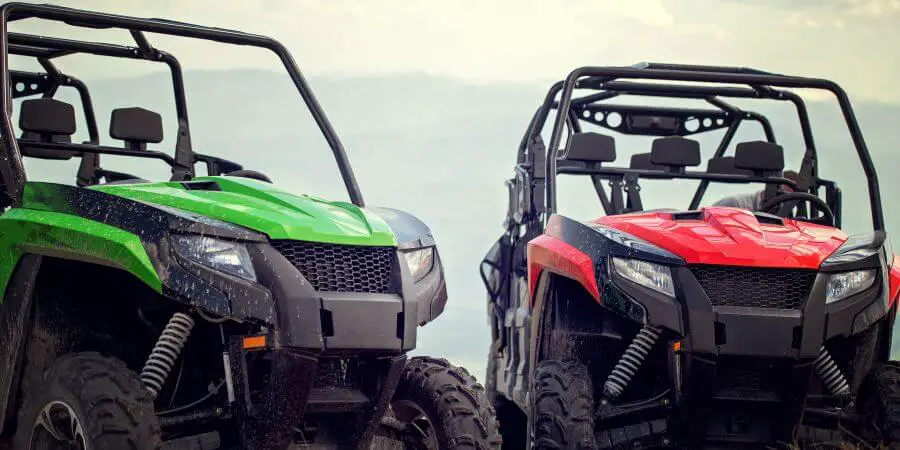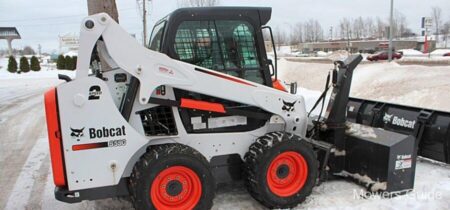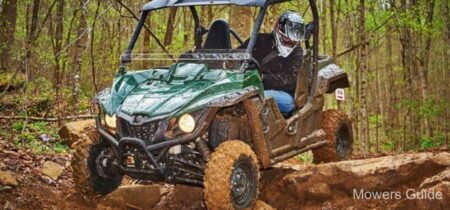Are you the proud owner of a Can-Am Defender? If so, you may have encountered some common issues with your vehicle. From electrical problems to engine issues, there are plenty of common problems that plague Can-Am Defenders, but don’t worry with the right solutions, you can get your Defender back on the road in no time!
In this blog post, we’ll explore eight of the most common problems Can-Am Defenders face and provide easy solutions to get your vehicle running again. Don’t let these common problems stop you from enjoying your Defender – read on to learn more!
Can-Am Defender Problems with Solutions
We’re going to talk about 8 common Can-Am Defender problems owners might face. From simple hiccups to more complex issues, we’ll break them down and offer straightforward solutions so you can enjoy your off-road adventures worry-free.
1) Over-Heating
Overheating is among the Can-Am Defender’s most prevalent issues. When you push your machine too hard or when riding in hot weather, this can occur.
The ECU (114C/237F) of the Defender has an over-temperature prevention feature that gradually reduces fuel flow until the engine is protected by entering limp mode. If you decide to return the vehicle for service, have the dealer check for any codes since the overtime may have set an overheat code.
Stop and let the engine cool if you see that your temperature indicator is increasing more quickly than usual.
2) Air Entrances
One of the most typical customer complaints is the position of the intake system. Due to their poor stock placement, many Defender owners who use them in dusty or sandy conditions experience problems with the intakes. The design fault could lead to a lot of costly issues.
For instance, excessive amounts of dirt and dust on or in the air filter system can severely reduce airflow to the engine. It may result in a fuel-rich mixture that has too much gas and not enough air, which will affect how smoothly the engine starts, idles, and runs. It results in the engine operating at the wrong air-to-fuel ratio.
This design fault may also lead to bigger problems. Bypassing an intake filter allows particles like dust, dirt, grit, or grime to enter the engine’s cylinders without being cleaned out first. Additionally, it could cause serious harm. A running engine can be internally torn apart by minute sand and dust particles, frequently leading to engine failure.
This problem is easily fixed by upgrading the filters. Filters that are upgraded cost about $72.95. Additionally, you might think about moving the intake using a snorkel kit. It moves the air intake points closer to the front or back of the rig, keeping them dry and dust-free. A riser snorkel kit costs around $289.95.
3) Running and Starting Problems
To run, an engine needs fuel to enter its cylinders. The majority of contemporary engines use fuel injectors in place of the mechanical carburetors that were found in earlier engines and are responsible for mixing gasoline and air.
The cylinder won’t receive enough gasoline if the fuel delivery system isn’t operating correctly. When there is too much air and not enough gas in a mixture, it is called “lean” and can quickly result in issues.
Check the fuel delivery to determine the likely cause of your Defender’s failure to start if you are confident that the battery is in good operating order and that the fuel and oil levels are satisfactory. Injectors and check fuel pressure.
- Turn the key, but do not start the machine. Listen for the gasoline pump.
- If you hear the gasoline pump, you can use a fuel pressure gauge to check the pressure. Pressure shouldn’t decrease right away and should stay at about 51 PSI.
- Your Defender’s inability to start is probably due to the fuel pump, if it doesn’t function. Hard starts, sputters, backfiring, and sudden engine shutdowns are all symptoms of a damaged fuel pump. Change it. The cost of an original CANAM Defender gasoline pump is about $70.00.
Noting that there is no guarantee that your air-to-fuel ratio is neither overly rich nor low, even though your Defender may start, airflow engine problems with starting and stopping are red flags for possible fuel or air problems. Think about having a skilled technician examine it.
4) Problems With Shifts
Shifting problems may be brought on by dirty clutches, worn EBS washers, worn or shredded drive belts, or a worn one-way bearing on the primary clutch when the idle is normal and the car still has its original belt. Regularly checking and changing the oil in the front differential, rear differential, gearbox, and engine is a good idea to get rid of any water or rust.
The gears are changed using a cable connected to the gear lever. To check if the cable is moving the tiny cam on the gearbox top, have someone operate the gear lever from park to high, low, neutral, etc. If not, there is a cable problem.
The shift mechanism in the gearbox is broken if it moves but the gearbox doesn’t react. If the cable moves but the cam does not, check the clamp at the end of the cam to verify if it is tight. The cost of a replacement OEM CANAM Defender shift cable is around $66.99.
Remove the belt guard, examine the primary and secondary clutches, and visually inspect the belt. If you try to run when the belt guard is filled with water, the belt may become damaged. Remove the belt when the engine is off to make sure the main is open.
To see if the primary starts to close over 2000 RPM, have someone start the engine in neutral while slowly revving the engine. If so, the primary is sound, but you should use compressed air to blast any belt dust or other debris out of the front of the primary.
The primary and secondary surfaces can be cleaned, and the black belt residue can be eliminated using a Scotch Brite pad. For thorough cleaning and polishing, use brake cleaner and a fresh towel. Start the machine with the wheels blocked in neutral after replacing the belt.
The primary should grasp the belt and start turning the secondary as soon as the engine is revved and the RPMs pass 2000–2500 RPM. Both clutches should function properly if the primary clutch closes and the secondary clutch opens. Work on the clutches if not.
5) Problems with the Safety Switch
The Defender is a popular choice for snowplow vehicles, even though many people merely use them for pleasure. When attempting to use your Can-Am Defender to the fullest extent possible, a design flaw in the location of the safety limit switch can be annoying and frustrating. A small error could also prevent the switch from functioning. When attaching machinery to the Defender, usually plows, the safety limit switch is useful.
The safety limit switch, which also protects against damage to the UTV and its attachments, controls the lifting cables. Unfortunately, Can-Am positioned this crucial switch inside the hood, behind the solenoid. From the cab, you cannot visit the location.
Since users have bypassed the safety of this control to avoid inconvenience, its awkward location hinders effective work and raises safety concerns.
Moving this switch to the interior of the cabin will avoid the design difficulty. You could rewire this yourself or purchase a kit if you have some basic electrical knowledge.
6) Recalls for Fire Hazards in CVT Air Intake
For 20 CANAM Defender models for 2020 and 2021, the CPSC and BRP issued a recall due to a fire hazard. The Apache 360 LT, Apache Backcountry, and track kits are available for the BRP side-by-side.
Snow can clog the original CVT air intake, overheating and breaking the drive belt, increasing the risk of a fire.
To maintain the CVT air intake point higher, drier, and dust-free, install an engine snorkel kit or a CVT air intake relocation kit to shift the intake to the cab area. It costs $53.03 to relocate. For $679.99, you can get a snorkel kit for a Defender engine.
7) The Belt Squeals
Belt squeaking is a common complaint among Can-Am Defender owners. High-pitched noise is a common characteristic of engine drive belts. It can happen for several reasons, such as a worn belt, insufficient tension, and contaminants.
A straightforward change might be sufficient to alleviate tension. Belt dressing is a further means of avoiding this. However, this is likely to only be effective if contaminating agents like oil and dirt are to blame. Replace the belt if it is cracked, worn, or aging. The replacement drive belt for the CAN-AM Defender costs $134.99.
8) Vehicle Won’t Take A Turn
Can-Am Defenders have an outstanding reputation for off-road performance. However, it is conceivable for your vehicle to function normally while having a problem turning.
If your vehicle is having trouble turning, it’s conceivable that you’re having problems with the transmission or the steering. This could result in the vehicle breaking down if it is not fixed.
Sterling issues could be the cause of your Can-Am Defender not turning. Most likely if wiring connecting the steering to the wheels is damaged or destroyed.
With the assistance of a professional, you should change the wires.
Final Words
The Can-Am Defender is a well-liked UTV that is used for both work and play. It has drawbacks despite being commonly owned. The Defender has plenty of difficulties, from beginning issues to design and quality issues, but if you’re ready to put some effort into resolving these frequently straightforward issues, the Defender might be a sensible and dependable option for business or play.
FAQs
Can-Am Defender vs. Polaris Ranger: Which is superior?
The CanAm Defender Max and the Polaris Ranger are two reliable vehicles once again. But if you want a car that will survive for a very long time, the Polaris Ranger has key features that make it the better option.
What can I do to speed up my Can-Am Defender?
In addition to all of the above, an ECU reflash can change the radiator fan’s rotational angle by 180 degrees and add 4+ degrees to the ignition timing. It can also be removed from the axle/shaft saver feature. You can speed up your Can-Am Defender by making just one of these modifications.
Can-Am Defenders accept any transmission fluid?
No, it’s crucial to use the transmission fluid that has been specifically recommended for your machine. Your transmission could get hurt if improper fluid is used.
What is the Can-Am Defender’s high mileage?
Can-Am Defenders with about 45,000 miles / 2,500 hours on them still appear brand new and function flawlessly, but we’ve also seen worn-out Defenders with only a few thousand kilometers.
Are Can-Am engines reliable to use?
Their equipment is typically dependable. The Rotax engines found in Can-Ams are regarded as the most dependable on the market; they are regarded as strong and dependable.
For more regarding utility task vehicles visit here and for more guides related to mowers visit Mowers Guide











